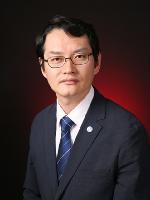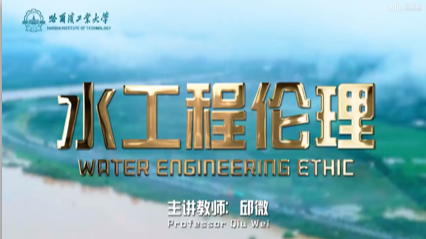
Nuclear Reactor Engineering课程:前往报名学习
Nuclear Reactor Engineering is a basic course for graduate students in Nuclear Science and Engineering. The objective of the course is to cultivate students' ability to discover, analyze, and solve problems, enhance the cultivation of academic thinking, broaden their academic horizons, enhance the teamwork awareness, and improve their English writing skills, therefore lay an academic foundation for their graduate research.
开设学校:;学科:工学、
Nuclear Reactor Engineering is a basic course for graduate students in Nuclear Science and Engineering. The objective of the course is to cultivate students' ability to discover, analyze, and solve problems, enhance the cultivation of academic thinking, broaden their academic horizons, enhance the teamwork awareness, and improve their English writing skills, therefore lay an academic foundation for their graduate research.
-Course Introduction
-2.1 Definition of Passive Safety Technology
--Foundations and Course Content of Passive Safety System
-2.2 Composition of Passive Core Cooling System of AP1000
--Passive containment cooling system
--Remark, Definition and Components
-2.3 Operation of Passive Residual Heat Remove System
--Passive Residual Heat Remove System (PRHR)
--Systems operation when LOCA happened
-2.4 Operation of Passive Safety Injection System
--Safety Injection and Depressurization
-2.5 Idea and Application of Passive Safety Technology
-2.6 Chapter Test
--Chapter 2 Chapter Test
-3.1 Introduction of BWR
--Introduction of BWR system and cycles
--Introduction of Boiling Water Reactor (PPT)
-3.3 Containment System of BWR
-3.3 Emergency Core Cooling Systems of BWR
--BWR ECCS
-3.4 Chapter Test
--Chapter 3 Chapter Test
-BWR and Fukushima NPP Accident(PPT)
-4.1 Overview of Fukushima Nuclear Accident
--General scene of Fukushima Nuclear Accident and NPP
-4.2 Introduction to Fukushima Nuclear Power Plant
--Accident Process- Status of NPPS before earthquake
--NPP’s reactor building, electrical power facility and cooling system
-4.3 Process of Fukushima Nuclear Accident
--Accident Process- After earthquake
--Accident process- After tsunami
-4.4 Summary and Thinking of the Accident
--Why Unit 2 didn’t explore and how to avoid such accidents
-4.5 Chapter Test
--Chapter 4 Chapter Test
-6.1 Unsteady Flow and Heat Transfer
--Unsteady Flow and Heat Transfer
--Unsteady Flow and Heat Transfer-1
--Unsteady Flow and Heat Transfer-2
--Unsteady Flow and Heat Transfer-3
--Unsteady Flow and Heat Transfer-4
-7.1 Mechanism Analysis of Flow Instability
--Two-phase Flow Instability(PPT)
-7.2 Chapter Test
--Chapter 7 Chapter Test
-8.1 Radiation Effects of Materials
--Radiation Effects in Materials(PPT)
--Radiation Effects in Materials
-8.2 Chapter Test
--Chapter 8 Chapter Test
-9.1 Introduction of Generation IV Advanced Nuclear Reactor
--Introduction of Generation IV(PPT)
--Introduction of Generation IV Advanced Reactor(1)
--Introduction of Generation IV Advanced Reactor(2)
--Introduction of Generation IV Advanced Reactor(3)
-9.2 Chapter Test
--Chapter 9 Chapter Test
-10.1 Small Modular Reactors
--Introduction of Small Modular Reactors (PPT)
--Introduction of Small Modular Reactors
--Introduction of Small Modular Reactors (2)
-10.2 Research and Development of Floating Nuclear Power Plant
--Introduction of Marine Nuclear Reactors(PPT)
--Introduction of Marine Nuclear Reactors(1)
--Introduction of Marine Nuclear Reactors(2)
-10.3 Space Nuclear Power System
--Introduction of Space Nuclear Power
--Introduction of Space Nuclear Power(1)
--Introduction of Space Nuclear Power(2)
-10.4 Chapter Test
--Chapter 10 Chapter Test
谭思超,主讲教师,中共党员,工学博士,教授,博士生导师,研究方向为核反应堆热工水力,核动力装置与设备,核动力系统海洋条件适应性,先进激光诊断技术,特种核动力等。近年来承担了国家重点研发计划、省杰出青年基金、国防973课题、国家自然科学基金、国防预研课题等项目20余项。在核工程领域权威期刊发表SCI论文50余篇,其中第一/通讯作者40篇,JCR一区和二区27篇,EI论文100余篇。获国防科技出版基金资助,出版学术专著1部,参编教材1部,获授权发明专利15项,获得黑龙江省自然科学二等奖1项(第1),国防科学技术进步三等奖2项(第2、第3),全国百篇优秀博士学位论文提名奖,入选万人计划青年拔尖人才,获得黑龙江省杰出青年基金支持,被聘为“龙江学者”青年学者。主讲课程《核反应堆工程》入选全国工程硕士专业学位研究生教育在线课程重点建设项目,《Nuclear Reactor Engineering》入选教育部来华留学英语授课品牌课程。
